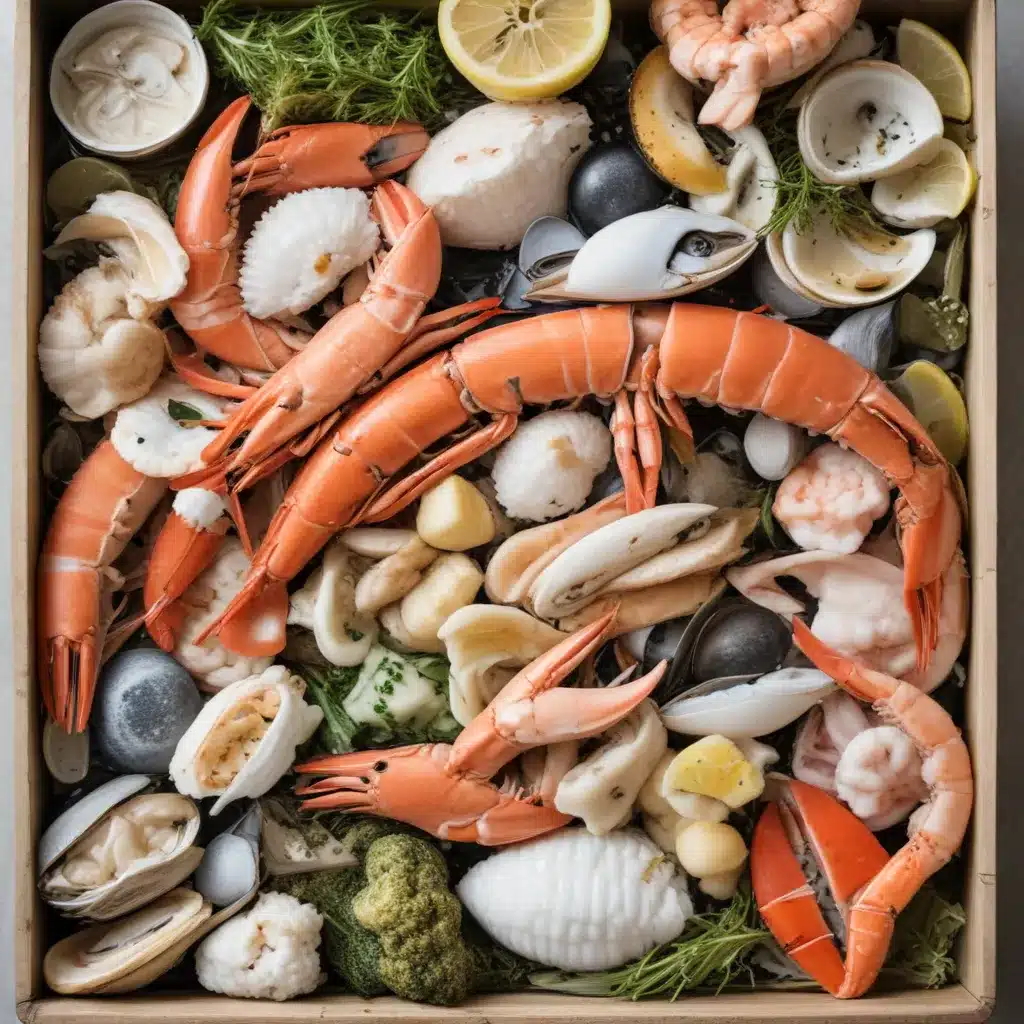
As a seafood dining expert for Fish Tales Cafe, I’m thrilled to share my insights on the art of preserving the freshness and quality of your favorite underwater delicacies. From cod to crustaceans, proper storage is the key to unlocking the full potential of your seafood purchases. Join me as we dive deep into the realm of refrigeration, freezing, and specialized techniques that will revolutionize the way you approach seafood storage.
Refrigeration Techniques
The foundation of seafood storage starts with your trusty refrigerator. When it comes to cooked shrimp, for example, the general recommendation is to consume it within 3-4 days when stored properly at or below 40°F (4°C). To extend the shelf life, be sure to allow the shrimp to cool to room temperature within 2 hours before transferring it to an airtight container or wrapping it tightly in foil or plastic. Labeling the container with the date can also help you keep track of its freshness.
For raw fish fillets or steaks, refrigeration is just as crucial. Aim to consume them within 1-2 days for the best quality. Place the fish on the top shelf of your fridge, away from any raw juices that could cross-contaminate other foods. Maintain a consistent temperature, and avoid opening the door too frequently, as fluctuations can promote bacterial growth.
Freezing Methods
When it comes to long-term storage, the freezer is your seafood’s best friend. Properly frozen fish and shellfish can maintain their quality for 2-3 months, or even longer with specialized techniques. Flash-freezing using liquid nitrogen or a dedicated blast chiller can help preserve the delicate texture and flavor of your seafood. For the home cook, a simple home freezer set to 0°F (-18°C) or below will do the trick.
When preparing to freeze, consider the size of your portions. Smaller, individual servings will thaw more evenly and reduce the risk of spoilage. Vacuum sealing or using modified atmosphere packaging can further safeguard your frozen seafood by limiting air exposure and preventing freezer burn.
Proper Packaging
The right packaging is paramount to keeping your seafood fresh, whether in the fridge or the freezer. Airtight containers, resealable plastic bags, or cryogenic pouches are all excellent options. For the ultimate in preservation, vacuum-sealed packages can exclude oxygen and lock in freshness for extended periods.
When storing raw fish, consider wet aging or dry aging techniques to concentrate flavors and enhance texture. These specialized methods require careful monitoring of temperature, humidity, and airflow to ensure optimal results.
Maximizing Shelf Life
Beyond proper storage, several factors can influence the longevity of your seafood. Temperature is crucial – consistent, cool conditions are essential for inhibiting bacterial growth and maintaining quality. Humidity management is also key, as excess moisture can lead to spoilage and off-flavors.
Ensuring adequate air circulation around your seafood is another important consideration. Avoid cramming items tightly together, as this can hinder air flow and promote the accumulation of harmful gases.
Preventing Spoilage
Combating the natural processes that lead to seafood spoilage is a crucial aspect of storage mastery. Techniques like brining, curing, or smoking can help inhibit bacterial growth and slow down oxidation, which can compromise texture and flavor.
Enzymatic activity, which can cause undesirable changes in color, odor, and texture, can be reduced through proper handling and storage. Maintaining optimal temperature, limiting air exposure, and minimizing handling can all contribute to minimizing these detrimental effects.
Proper Thawing Protocols
When it’s time to enjoy your frozen seafood bounty, the thawing process deserves special attention. Slow, gradual thawing in the refrigerator is the safest approach, as it helps prevent the rapid growth of bacteria. Immersing sealed packages in cold water or using the defrost setting on your microwave are acceptable alternatives, but require more vigilance to ensure even thawing and timely consumption.
Specialized Storage Solutions
Beyond the basic refrigerator and freezer, innovative storage methods can take your seafood preservation game to the next level. Vacuum sealing and modified atmosphere packaging help exclude air and lock in freshness, while cryogenic freezing techniques can preserve delicate seafood structures with minimal quality degradation.
Seafood Type-Specific Strategies
Different types of seafood require tailored storage approaches. Delicate white fish like cod may benefit from gentler handling and shorter storage times, while oily salmon and tuna can often tolerate longer freezer storage. Crustaceans like shrimp and lobster have their own nuances, often doing best with the shells on. Mollusks like oysters and clams require specialized techniques to maintain their briny freshness.
Food Safety Considerations
Safeguarding your seafood’s quality and safety is of utmost importance. Vigilant pathogen mitigation measures, proper labeling and traceability, and compliance with regulatory guidelines are essential to ensuring your seafood dining experiences are not only delectable but also risk-free.
Household Storage Optimization
Maximizing the potential of your home refrigerator and freezer can make all the difference in preserving the freshness of your seafood. Dedicating specific zones for seafood storage, implementing strategic organization tactics, and optimizing the use of your freezer compartment can yield dividends in terms of extended shelf life and reduced waste.
By mastering the art of seafood storage, you’ll unlock a world of culinary possibilities at Fish Tales Cafe. From perfectly cooked cod to succulent shrimp, your seafood dishes will always shine with unparalleled freshness and flavor. Dive in and explore the secrets to extending the lifespan of your favorite underwater delicacies – your taste buds will thank you.

